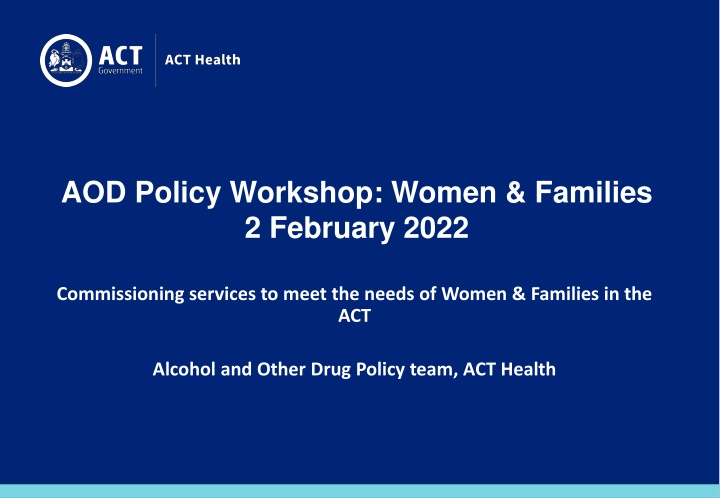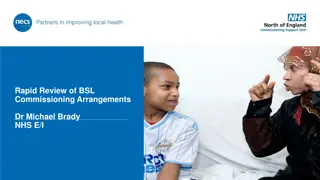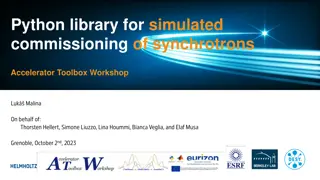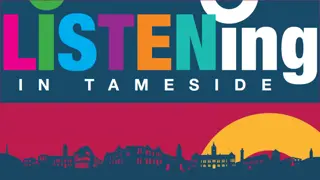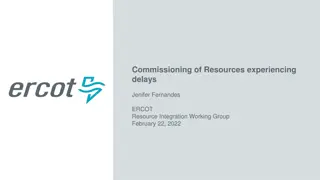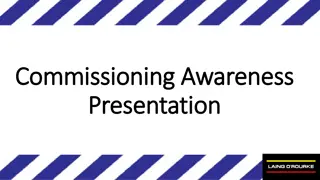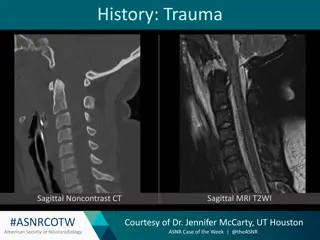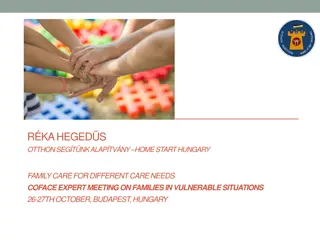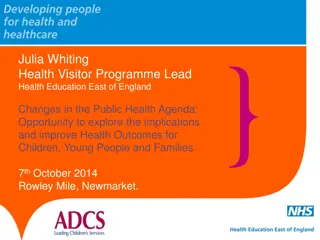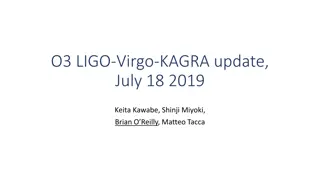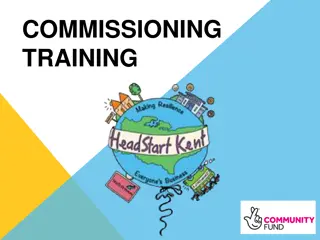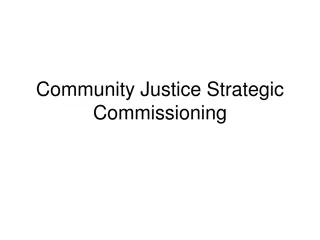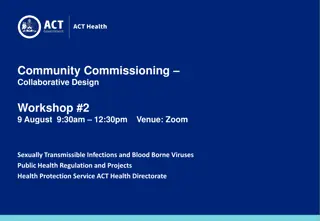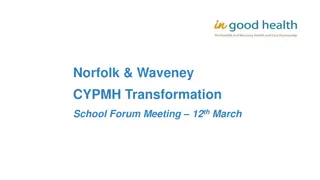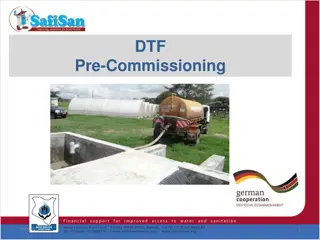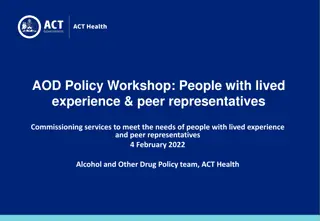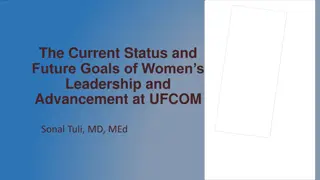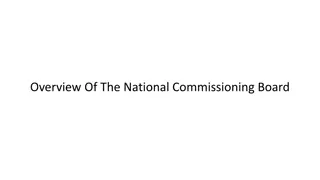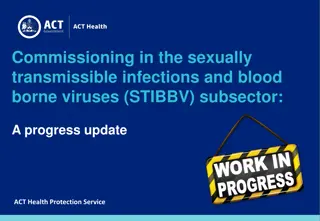Commissioning Services for Women and Families in ACT: AOD Policy Workshop
Workshop on commissioning services to meet the needs of women and families in the ACT, focusing on key areas like young people, lived experience, AOD, and mental health. The session aims to inform the approach to non-government AOD services from 2024 and seeks collaboration with stakeholders. The Commissioning Roadmap outlines the process of strategizing, designing, procuring, and delivering outcomes. Engagement in developing the next Drug Strategy Action Plan is encouraged, with priorities for youth being a key discussion point.
Download Presentation

Please find below an Image/Link to download the presentation.
The content on the website is provided AS IS for your information and personal use only. It may not be sold, licensed, or shared on other websites without obtaining consent from the author.If you encounter any issues during the download, it is possible that the publisher has removed the file from their server.
You are allowed to download the files provided on this website for personal or commercial use, subject to the condition that they are used lawfully. All files are the property of their respective owners.
The content on the website is provided AS IS for your information and personal use only. It may not be sold, licensed, or shared on other websites without obtaining consent from the author.
E N D
Presentation Transcript
AOD Policy Workshop: Women & Families 2 February 2022 Commissioning services to meet the needs of Women & Families in the ACT Alcohol and Other Drug Policy team, ACT Health
Purpose of the session One of several workshops focusing on key areas Young people, women and families, lived experience and peer representatives, AOD and mental health, and AOD specialist services Informing our approach to commissioning the non-government AOD services our community needs from 1 January 2024 Collaboration with community and health sector partners, service users and other key stakeholders is a key part of this process We are keen to hear from you. This session will be interactive Feedback will also feed into development of the next Drug Strategy Action Plan, following conclusion of previous plan in 2021 2
Commissioning Roadmap Commissioning cycle 1. Strategise 2. Design 3. Procure 4. Deliver Outcomes Continuous evaluation Strategise phase Understand current services and population need Identify service gaps and emerging priorities Define system outcomes we are seeking to achieve Engage with service users and sector partners to test and refine understanding Develop strategic plan, including priorities for commissioning Identify areas for collaborative design Commissioning Roadmap can be found here 3
Next Drug Strategy Action Plan (DSAP) The ACT Drug Strategy Action Plan (DSAP) is the ACT s jurisdictional plan underneath the National Drug Strategy 2017-26 The Drug Strategy Action Plan 2018-2021 ended in December Final Progress Report 2020-21 and DSAP policy review will be released following consultation to reflect on achievements and challenges The next DSAP is beginning to be developed Discussion paper on the next DSAP out for feedback until 18 February We are keen to hear your input in this session on priorities for youth There will be further consultation on the next DSAP but we can take on early ideas at this stage 4
Why women and families? Women and families are an identified priority group in the ACT Drug Strategy Action Plan Alcohol, tobacco and other drug use is a significant risk factor contributing to burden of disease in women Women, and particularly women with children, have specific needs when accessing alcohol and other drug (AOD) treatment services and programs Some women experience multiple levels of disadvantage (disability, CALD, housing & homelessness, safety) and have complex needs AOD use has adverse health, social and economic consequences for people using drugs, their families, carers, and the wider community 6
What we know: AOD treatment (2019-20) 35.8% of the clients who received AOD treatment in the ACT were female Clients receiving treatment for someone else s AOD use were more likely to be female (76%) The four most common drugs women sought treatment for (for their own AOD use) were alcohol, amphetamines, cannabis and heroin The four most common treatment types delivered to women (for their own and for someone else s AOD use) were counselling, information and education, support and case management and assessment only On a survey day in 2018 (particularly service users accessing ACT non- residential AOD services): 61.2% of adult service users were parents; and of these, 70.8% had children aged under 18 years (Service Users Satisfaction & Outcome Survey 2018) 34.64% of clients receiving opioid pharmacotherapy treatment on a snapshot day in June 2020 were female (NOPSAD 2020) 7
What we know: Injecting drug use Data reported for needle and syringe program (NSP) outlets operating nationally on 30 June 2021: One quarter of occasions of service recorded involved females. Illicit Drug Reporting System 2021: 100 people (18 years and over) from Canberra participated in the survey 30% were female Mean age - 44 years 88% were unemployed 52% were currently in drug treatment 13% experienced a non fatal overdose in the previous 12 months 42% self reported a mental health problem in the 6 months prior to interview 26% had seen a mental health professional Of those who commented, the three most common mental health issues reported were depression, anxiety and PTSD 8
What we know: ATOD use by women National results from the 2019 National Drug Household Survey: 16% of females consumed more than 4 standard drinks in a single occasion at least once a month. However of all the people who consumed more than 4 standard drinks in a single occasion, 34% of them were female 9.4% of females consumed an average of more than 2 standard drinks per day, however of all the people who consumed more than 2 standard drinks per day, 29% were female 9.9% of females were daily smokers. However of all the people who were daily smokers, 46% were female 9
What we know: harm from alcohol use Results from the 2019 National Drug Household Survey: 77% of Australians aged 14 and over drank alcohol in the previous 12 months. ASSIST-Light scores indicated, of these: 9.9% were likely to meet the criteria for alcohol dependence. Males (13.5%) were more likely to receive this score compared to females (6.3%) A further 29% of this population were using alcohol to a hazardous or harmful extent with males (36%) more likely to meet this threshold than females (22%) 10
What weve heard: Recent submissions and Inquiries Increase access to effective and affordable treatment and support services, for people who use drugs, but also for their families and carers Stigma remains an issue which can delay or stop people and families from seeking support Educate the community to reduce stigma Focus on drug education for people who use drugs and their families Fund counselling for children of people who use drugs Ensure culturally appropriate services for CALD people and Aboriginal and Torres Strait Islander people Improve linkages between services, particularly AOD and mental health services Adopt housing first approach for homeless people using AODs Investigate integrated care models for disadvantaged people Support and encourage GP engagement in AOD Consider impacts of law on family and carers Increase sector workforce training funding Ensure a highly qualified workforce, but also that staff are supported and sustained 11
What we know (1) : Existing AOD treatment and support services A wide range of AOD treatment and support services are delivered by publicly funded AOD treatment services (government and non-government) to people with problematic drug use: Adults, young people, individuals and couples with accompanying children generally up to the age of 12-13 years Families and carers of people who use drugs Women specific treatment and support services (provided by Toora Women) Young people specific treatment and support services (provided by Ted Noffs and Gugan Gulwan Youth Aboriginal Corporation) AOD treatment and support services delivered in both residential and non-residential settings. Children (under 5 years) of parents participating in AOD treatment (generally rehabilitation programs) have access to funded long day care places and out of school activities 12
What we know (2): Existing AOD treatment and support services A recent expansion of Drug Diversion Services (Police and Court) has increased capacity for ongoing case management with clients. This has also provided additional support to individuals at risk of contact with the criminal justice system, most notably, youth and family counselling FARE run the Ripple campaign, a project supporting women aged 40-65 to reduce the amount of alcohol they drink The Pregnant Pause program with a focus on creating supportive environments to help women have alcohol-free pregnancies was active in the ACT from June 2020 to 2021. The national website identifies the ACT and national support services to contact including Directions Health Services and CatholicCare. Canberra Health Services Safer Baby Bundle program has a focus on reducing smoking during pregnancy ACT Health s new alcohol education webpage provides information about the effects of alcohol on health, ways to reduce drinking to reduce the risk of harm, and specific information for people who are pregnant or trying to become pregnant, children and families 13
What we know: Workforce development and capacity building in the ACT Industry delivered alcohol, tobacco and other drug assessments and training for allied sectors, which include youth, housing, multicultural, mental health and women s services In scope AOD treatment services participated in recent training to assist with identifying and responding effectively to domestic and family violence (DFV). Existing AOD sector DFV training materials have been adapted for use by workers (workers in relevant roles) Capacity building of the ACT and surrounding region s Aboriginal and Torres Strait Islander communities to address DFV in the context of AOD use 14
Government Policies Healthy Canberra: ACT Preventive Health Plan 2020-25 aims to Lower rates of smoking among population groups at higher risk, including Aboriginal and Torres Strait Islander people Reduce drinking at risky levels The ACT Women s Plan 2016-26 identifies health and wellbeing, housing and homelessness, safety, economic security, and leadership as priority areas, with a focus on achieving improved outcomes in the following population groups: Women with disability Aboriginal and Torres Strait Islander women Older women Women who have experienced violence Women from Culturally and Linguistically Diverse backgrounds Single parent women 15
DISCUSSION 16
Question 1 (10 minutes) How are current services working well to serve women and families around AOD? Where are the areas of strength in the sector or community that could be maintained or built upon? 17
Question 2 (10 minutes) What are the key areas of need right now for women and families? Are there specific needs of women and families that are not being met? 18
Question 3 (10 minutes) Are there any emerging or anticipated areas of need? 19
Question 4 (15 minutes) Are there any friction points with current services, or things that could be improved? What is not working smoothly? Where is further integration or coordination between services/sectors needed? What would success look like? 20
Question 5 (20 minutes) What specific action/s could the sector, Government and non- government, take in the next 5 years to have an impact for women and families in relation to AOD? Think about What would make the most impactful change? What would be an easy win with a small adjustment? How could work in the short/medium term help to move us towards a significant long-term goal? What evidence-based action could be implemented? How could existing resources be realigned to the benefit of the community? How can we better reach and provide services to women and families and as a community? 21
Question 6 (10 minutes) Out of all the ideas raised so far, what would your top 1-2 priorities be? Are there others issues or ideas that we haven t heard yet? 22
Question 7 (10 minutes) What is the best way for Government to hear from women and families in this process? 23
Next steps Next workshops: lived experience and peer representatives, AOD and mental health, and AOD specialist services Written summary of the strategise process, including these workshops, will be circulated and made public Next commissioning phase: collaborative design, will follow when the strategise phase is complete. This process will also be open to participation Drug Strategy Action Plan (DSAP) Progress Report 2020-21 and Review are out for feedback until 11 February and will be released publicly following consultation Discussion paper on the next DSAP out for feedback until 18 February There will be further opportunities for input on commissioning and next DSAP 24
Questions/comments? Contact Us AODpolicy@act.gov.au 25
